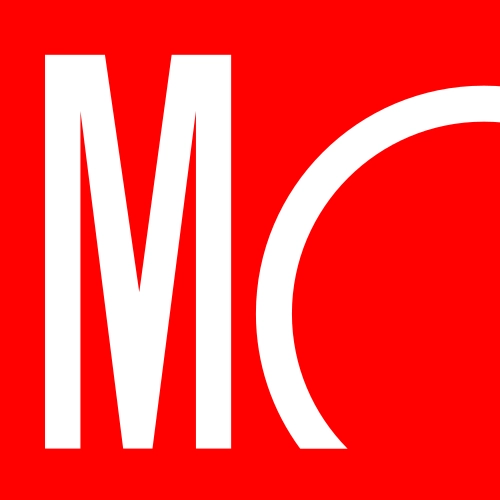Trump tariffs set to have ripple effect on this ASX industry
We lower our Fair Value estimates for several media stocks as economic uncertainty could stifle vital advertising revenues.
Mentioned: Seven West Media Ltd (SWM), Nine Entertainment Co. Holdings Ltd (NEC), Southern Cross Media Group Ltd (SXL), oOh media Ltd (OML)
US tariffs appear likely to dampen Australian GDP growth over the next few years, but the magnitude is anyone’s guess.
The quantum and implementation timing of tariffs is in flux, and any mitigating monetary or fiscal response is difficult to predict. As such, economic uncertainty reigns.
Why this matters for media companies
Advertising accounts for 60%-90% of the revenue of ANZ media groups under our coverage. The two key drivers of advertising spending are consumer sentiment and corporate confidence, and the current jittery macroeconomic environment is conducive to neither.
Take metropolitan TV advertising. It suffers acute downturns in times of turmoil. It is set to drop 10% a year on average from fiscal 2023-25 due to weak sentiment and structural pressures. It fell 14% in the 2020 pandemic, 9% in the 2009 credit crisis, and many times in between whenever the economy shivered.
Critically, we see a lower probability of a marked recovery from any tariff-induced headwinds. Allocation of marketing budgets to traditional advertising is susceptible to a permanent step-down when the tariff dust clears, given stiff competition from new media.
Fair Value cuts for ASX media names
We cut our fair value estimates by 5% to AUD 2.70 for Nine Entertainment (ASX: NEC), 19% to AUD 0.30 for Seven West Media (ASX: SWM), and 10% to AUD 0.90 for Southern Cross (ASX: SXL)—all no-moat-rated. This reflects reductions to our prior advertising revenue recovery assumptions.
For no-moat oOh media (ASX: OML), the cut in our fair value estimate is modest, by 5% to AUD 1.55. Outdoor advertising doesn’t suffer from the same structural headwinds hitting traditional TV, radio, and newspapers. Indeed, the market has grown at an 11% CAGR since 2022, defying the wider advertising market.
Still value to be found
Shares in Nine, Seven, and Southern Cross remain below their revised intrinsic values. Trading at an average 3 times our midcycle EBITDA forecasts, expectations are already in the dumps. Any signs of revenue stabilization or positive progress on cost-outs are likely to resurrect the shares.
For Nine Entertainment, we estimate traditional advertising accounts for around 50% of group revenue, excluding Domain, in which Nine holds a 60% stake. Cuts to recovery assumptions in this category, encompassing mostly linear TV advertising but also newspaper and radio, result in an average 5% reduction to our group EBITDA forecasts.
For Seven West Media, we estimate traditional advertising accounts for around 80% of group revenue, mostly in TV advertising. The negative leverage of this traditional advertising revenue to the uncertain macroeconomic backdrop necessitates an average 16% percentage reduction to our group earnings projections.
For Southern Cross Media, we estimate traditional advertising accounts for almost 90% of group revenue, even without the now-divested regional TV operations. Cuts to recovery assumptions for this revenue result in an average 12% reduction to our group EBITDA forecasts.
Cost reductions are in full swing for all these three media companies. Unfortunately, more may be needed to combat the likely revenue damage from precarious marketer confidence and consumer sentiment.
Get Morningstar insights in your inbox
Terms used in this article
Star Rating: Our one- to five-star ratings are guideposts to a broad audience and individuals must consider their own specific investment goals, risk tolerance, and several other factors. A five-star rating means our analysts think the current market price likely represents an excessively pessimistic outlook and that beyond fair risk-adjusted returns are likely over a long timeframe. A one-star rating means our analysts think the market is pricing in an excessively optimistic outlook, limiting upside potential and leaving the investor exposed to capital loss.
Fair Value: Morningstar’s Fair Value estimate results from a detailed projection of a company’s future cash flows, resulting from our analysts’ independent primary research. Price To Fair Value measures the current market price against estimated Fair Value. If a company’s stock trades at $100 and our analysts believe it is worth $200, the price to fair value ratio would be 0.5. A Price to Fair Value over 1 suggests the share is overvalued.
Moat Rating: An economic moat is a structural feature that allows a firm to sustain excess profits over a long period. Companies with a narrow moat are those we believe are more likely than not to sustain excess returns for at least a decade. For wide-moat companies, we have high confidence that excess returns will persist for 10 years and are likely to persist at least 20 years. To learn about finding different sources of moat, read this article by Mark LaMonica.
Uncertainty Rating: Morningstar’s Uncertainty Rating is designed to capture the range of potential outcomes for a company. An investor can think of this as the underlying risk of the business. For higher risk businesses with wider ranges of potential outcomes an investor should consider a larger margin of safety or difference between the estimate of what a share is worth and how much an investor pays. This rating is used to assign the margin of safety required before investing, which in turn explicitly drives our stock star rating system. The Uncertainty Rating is aimed at identifying the confidence we should have in assigning a fair value estimate for a stock. Read more about business risk and margin of safety here.

